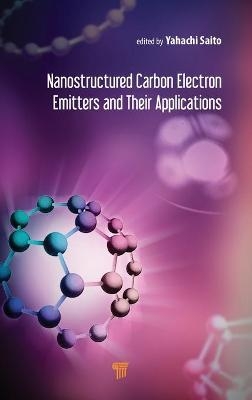
Nanostructured Carbon Electron Emitters and Their Applications
Jenny Stanford Publishing (Verlag)
978-981-4877-62-6 (ISBN)
Carbon forms a variety of allotropes due to the diverse hybridization of s- and p-electron orbitals, including the time-honored graphite and diamond as well as new forms such as C60 fullerene, nanotubes, graphene, and carbyne. The new family of carbon isotopes—fullerene, nanotubes, graphene, and carbyne—is called “nanostructured carbon” or “nanocarbon.” These isotopes exhibit extreme properties such as ultrahigh mechanical strength, ultrahigh charge–carrier mobility, and high thermal conductivity, attracting considerable attention for their electronic and mechanical applications as well as for exploring new physics and chemistry in the field of basic materials science. Electron sources are important in a wide range of areas, from basic physics and scientific instruments to medical and industrial applications. Carbon nanotubes (CNTs) and graphene behave as excellent electron-field emitters owing to their exceptional properties and offer several benefits compared to traditional cathodes. Field emission (FE) produces very intense electron currents from a small surface area with a narrow energy spread, providing a highly coherent electron beam—a combination that not only provides us with the brightest electron sources but also explores a new field of electron beam–related research.
This book presents the enthusiastic research and development of CNT-based FE devices and focuses on the fundamental aspects of FE from nanocarbon materials, including CNTs and graphene, and the latest research findings related to it. It discusses applications of FE to X-ray and UV generation and reviews electron sources in vacuum electronic devices and space thrusters. Finally, it reports on the new forms of carbon produced via FE from CNT.
Yahachi Saito is Professor Emeritus at Nagoya University, Japan, and a fellow at Toyota Physical and Chemical Research Institute, Japan. He has also been a professor at Toyohashi University of Technology and Mie University, Japan, and a visiting scientist at AT&T Bell Laboratories. His area of expertise encompasses the synthesis, characterization, and application of nanometer-scale materials, especially inorganic atomic clusters and fine particles, fullerene, CNTs, and graphene. He has studied CNT-field emitters since 1996, collaborating with Noritake Itron Corp. since 1997 for the development of display devices using CNT as a cold cathode. They demonstrated the world’s first CNT-based display device at the SID International Conference in 1998.
1. FEM and FIM of Carbon Nanotubes 2. Electromechanical Self‐Oscillations of Carbon Field Emitters 3. Performance of Point-Typed Carbon Nanotube Field Emitters 4. Theoretical Field-Emission Patterns from Carbon Nanotubes 5. Heat Localization and Thermionic Emission from Carbon Nanotubes 6. Field Emission from the Edges of Single-Layer Graphene 7. FEM and FIM of Graphene 8. Spin-Polarized Field-Emitted Electrons from Graphene Oxide Edges 9. Theoretical Coherent Field Emission of Graphene 10. Influence of Edge Structures of Graphene on Field-Emission Properties 11. Theory of Thermionic Electron Emission for 2D Materials 12. Direct Grown Vertically Full Aligned Carbon Nanotube Electron Emitters for X-Ray and UV Devices 13. Development of CNT X-Ray Technology for Medical and Dental Imaging 14. Graphene Cold Field-Emission Sources for Electron Microscopy Applications 15. CNT Field-Emission Cathode for Space Applications 16. Growth of Long Linear Carbon Chains after Serious Field Emission from a CNT Film 17. Emission of C20 + by Field Evaporation from CNT
| Erscheinungsdatum | 02.06.2021 |
|---|---|
| Zusatzinfo | 13 Tables, black and white; 42 Line drawings, color; 42 Line drawings, black and white; 74 Halftones, black and white; 42 Illustrations, color; 116 Illustrations, black and white |
| Sprache | englisch |
| Maße | 152 x 229 mm |
| Gewicht | 850 g |
| Themenwelt | Naturwissenschaften ► Biologie |
| Naturwissenschaften ► Physik / Astronomie ► Optik | |
| Technik ► Maschinenbau | |
| Technik ► Umwelttechnik / Biotechnologie | |
| ISBN-10 | 981-4877-62-X / 981487762X |
| ISBN-13 | 978-981-4877-62-6 / 9789814877626 |
| Zustand | Neuware |
| Haben Sie eine Frage zum Produkt? |
aus dem Bereich


